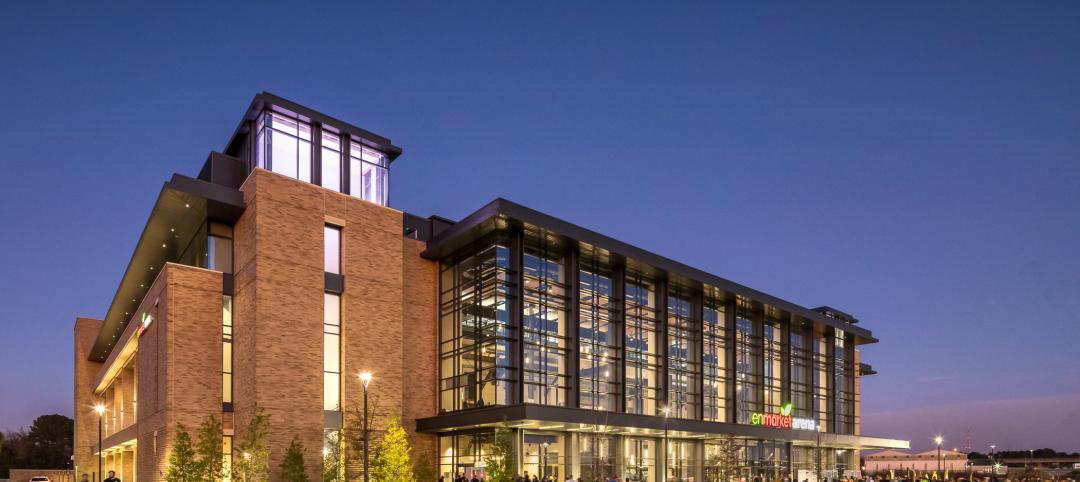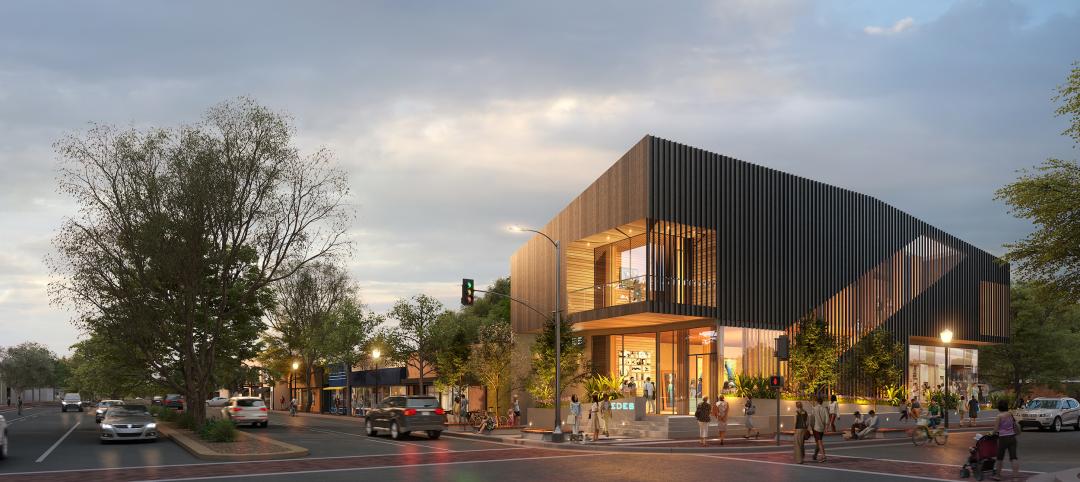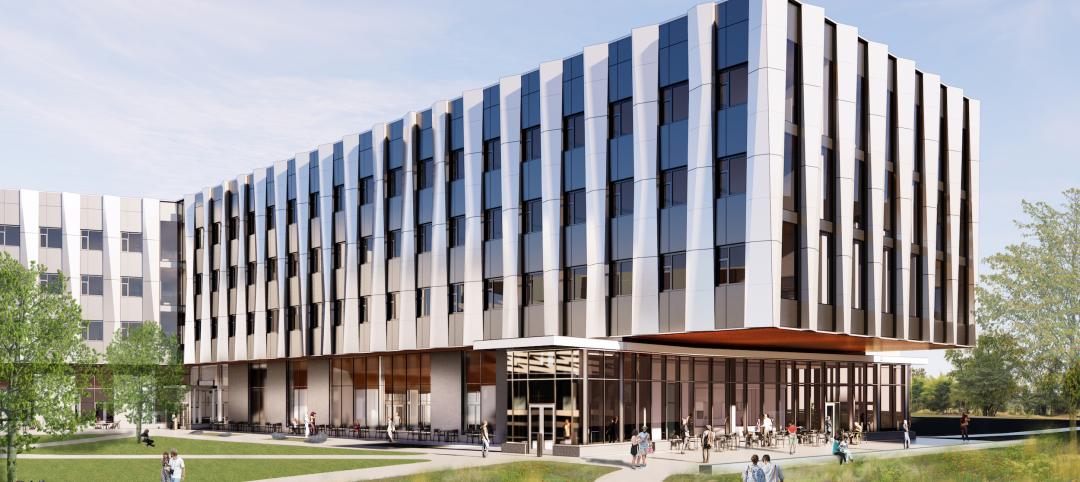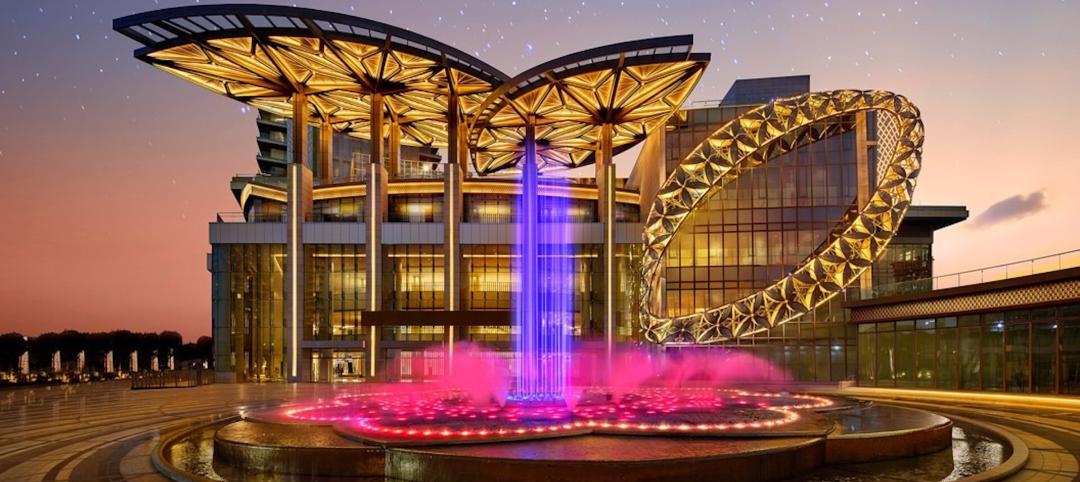Current federal contracting laws are discouraging talented architects from competing for federal contracts, depriving government and, by inference, taxpayers of the best design expertise available, according to AIA testimony presented today on Capitol Hill.
Testifying before the House of Representatives Committee on Oversight and Government Reform, Charles Dalluge, Executive Vice President of Omaha, Nebraska-based architecture firm Leo A Daly, called for reform of the design-build contracting process so that more design and architectural firms can bid on federal contracts without fear of losing money in the process.
The federal market has been a key for architecture firms’ survival in the recession, and increased competition costs have forced many firms from participating in federal contracts, Dalluge testified.
“According to a survey published by the AIA Large Firm Roundtable in 2012, between 2007 and 2011 architecture firms in teams that competed for public- and private-sector design-build projects spent a median of $260,000, by making detailed plans, models and other materials,” Dalluge said. In recent years, federal agencies have forced larger numbers of teams to compete against one another, reducing the chances that any one team can win.
“Due to the current economic climate, design firms face the dilemma of ‘betting it all’ on a contract they may not get, or self-selecting out of the federal design-build market,” Dalluge said, adding that it also costs taxpayers more money “when contracting officers spend increasing amounts of time reviewing a larger number of complicated design proposals.”
To reform the burdensome federal contracting process, Dalluge called on Congress to pass The Design-Build Efficiency and Jobs Act of 2013 (H.R. 2750), which was introduced by Rep. Sam Graves (R-MO) in July.
“H.R. 2750 requires contracting officers to provide a written justification to the head of an agency for requiring more than five finalists in the second stage of a design-build solicitation and agency approval of such justification,” Dalluge said. “H.R. 2750 will provide more certainty and opportunities for design firms of all sizes who wish to enter the federal marketplace. It will ensure that agencies have the ability to select the most qualified design-build teams who will deliver the best buildings for agencies and the public. It also will limit federal agencies’ burdens in reviewing a large number of proposals.”
About the American Institute of Architects
For over 150 years, members of the American Institute of Architects have worked with each other and their communities to create more valuable, healthy, secure, and sustainable buildings and cityscapes. Members adhere to a code of ethics and professional conduct to ensure the highest standards in professional practice. Embracing their responsibility to serve society, AIA members engage civic and government leaders and the public in helping find needed solutions to pressing issues facing our communities, institutions, nation and world. Visit www.aia.org.
About LEO A DALY
Established in 1915, LEO A DALY is an international architecture, engineering, and interior design firm. The Company’s portfolio includes award-winning projects in 87 countries and all 50 states. With over 800 employees in 30 offices worldwide, the firm ranks in the top 10 largest design firms in the United States and top 25 globally. For more information, visit www.leoadaly.com
Related Stories
Arenas | Jun 14, 2023
A multipurpose arena helps revitalize a historic African American community in Georgia
In Savannah, Ga., Enmarket Arena, a multipurpose arena that opened last year, has helped revitalize the city’s historic Canal District—home to a largely African American community that has been historically separated from the rest of downtown.
Building Materials | Jun 14, 2023
Construction input prices fall 0.6% in May 2023
Construction input prices fell 0.6% in May compared to the previous month, according to an Associated Builders and Contractors analysis of the U.S. Bureau of Labor Statistics’ Producer Price Index data released today. Nonresidential construction input prices declined 0.5% for the month.
Mass Timber | Jun 13, 2023
Mass timber construction featured in two-story mixed-use art gallery and wine bar in Silicon Valley
The Edes Building, a two-story art gallery and wine bar in the Silicon Valley community of Morgan Hill, will prominently feature mass timber. Cross-laminated timber (CLT) and glulam posts and beams were specified for aesthetics, biophilic properties, and a reduced carbon footprint compared to concrete and steel alternatives.
Mixed-Use | Jun 12, 2023
Goettsch Partners completes its largest China project to date: a mixed-used, five-tower complex
Chicago-based global architecture firm Goettsch Partners (GP) recently announced the completion of its largest project in China to date: the China Resources Qianhai Center, a mixed-use complex in the Qianhai district of Shenzhen. Developed by CR Land, the project includes five towers totaling almost 472,000 square meters (4.6 million sf).
Engineers | Jun 12, 2023
Stantec to acquire Environmental Systems Design
Stantec, a global leader in sustainable design and engineering, has signed an agreement to acquire Environmental Systems Design, Inc. (ESD), a 270-person engineering firm headquartered in Chicago. Founded in 1967, ESD has built a reputation for excellence and innovation in high-performance design with a roster of industry-leading clients. The terms of the transaction are not disclosed.
University Buildings | Jun 9, 2023
Cornell’s new information science building will foster dynamic exchange of ideas and quiet, focused research
Construction recently began on Cornell University’s new 135,000-sf building for the Cornell Ann S. Bowers College of Computing and Information Science (Cornell Bowers CIS). The structure will bring together the departments of Computer Science, Information Science, and Statistics and Data Science for the first time in one complex.
Museums | Jun 6, 2023
New wing of Natural History Museums of Los Angeles to be a destination and portal
NHM Commons, a new wing and community hub under construction at The Natural History Museums (NHM) of Los Angeles County, was designed to be both a destination and a portal into the building and to the surrounding grounds.
Performing Arts Centers | Jun 6, 2023
Mumbai, India’s new Nita Mukesh Ambani Cultural Centre has three performing arts venues
In Mumbai, India, the recently completed Nita Mukesh Ambani Cultural Centre (NMACC) will showcase music, theater, and fine arts from India and from across the globe. Atlanta’s TVS Design served as the principal architect and interior designer of both the cultural center and the larger, adjacent Jio World Centre.
Architects | Jun 6, 2023
Taking storytelling to a new level in building design, with Gensler's Bob Weis and Andy Cohen
Bob Weis, formerly the head of Disney Imagineering, was recently hired by Gensler as its Global Immersive Experience Design Leader. He joins the firm's co-CEO Andy Cohen to discuss how Gensler will focus on storytelling to connect people to its projects.
Codes and Standards | Jun 6, 2023
California’s new power grid modernization plan furthers ambitious climate goals
California’s new $7.3 billion grid modernization plan is a crucial step in furthering its ambitious climate goals. The board of governors for the California Independent System Operator (CAISO), the state’s grid operator, recently approved a strategy to build thousands of miles of new high-voltage transmission lines.

















